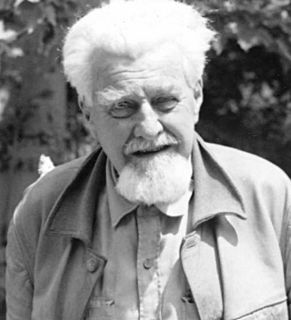A Quote by Simon Conway Morris
Life's Solution builds a forceful case for the predictability of evolutionary outcomes, not in terms of genetic details but rather their broad phenotypic manifestations. The case rests on a remarkable compilation of examples of convergent evolution, in which two or more lineages have independently evolved similar structures and functions.
Related Quotes
There is no evolutionary pressure to create minds capable of forming sciences; it just happened. Evolutionary pressure has not led to higher rates of reproduction for people capable of solving scientific problems or creating new scientific ideas. So if, in fact, the science-forming capacities evolved for other reasons, it would not be too surprising if those particular structures that have developed proved to be rather special in their nature, reflecting the contingencies of their evolution or the working of physical law.
In the complex course of its evolution, life exhibits a remarkable contrast to the tendency expressed in the Second Law to Thermodynamics. Where the Second Law expressed an irreversible progression toward increased entropy and disorder, life evolves continually higher levels of order. The still more remarkable fact is that this evolutionary drive to greater and greater order also is irreversible. Evolution does not go backward.
Sundry manifestations of nature in men and women, are greatly perverted by existing social conventions upheld by both. There are feelings which, under our predatory régime, with its adapted standard of propriety, it is not considered manly to show; but which, contrariwise, are considered admirable in women. Hence repressed manifestations in the one case, and exaggerated manifestations in the other; leading to mistaken estimates.
The evolutionary vision is agnostic in regard to systems in the universe of greater complexity than those of which human beings have clear knowledge. It recognizes aesthetic, moral, and religious ideas and experiences as a species, in this case of mental structures or of images, which clearly interacts with other species in the world's great' ecosystem.
There is behavioral ecology, which looks closely at the difference different ecologies make to behavior and other features of animals and humans. There's evolutionary individual psychology, there's evolutionary social psychology. In Darwin's terms, evolution couldn't exist without variation, and variation is important in behavioral genetics. And so on, and so on. There are so many instances in which evolution actually sharpens the precision, I think, with which one can find out the importance of differences. We're interested in differences as well as commonalities.
In the final analysis the hierarchic pattern is nothing like the straightforward witness for organic evolution that is commonly assumed. There are facets of the hierarchy which do not flow naturally from any sort of random undirected evolutionary process. If the hierarchy suggests any model of nature it is typology and not evolution. How much easier it would be to argue the case for evolution if all nature's divisions were blurred and indistinct, if the systema naturalae was largely made up of overlapping classes indicative of sequence and continuity.
Considering that we live in an era of evolutionary everything---evolutionary biology, evolutionary medicine, evolutionary ecology, evolutionary psychology, evolutionary economics, evolutionary computing---it was surprising how rarely people thought in evolutionary terms. It was a human blind spot. We look at the world around us as a snapshot when it was really a movie, constantly changing.
The first point one has to get straight in discussions like this, is that ID is not the opposite of evolution. Rather, it is the opposite of Darwinism, which says life evolved by an utterly unguided, undirected mechanism. If god directed the process of evolution, or rigged the universe to produce complex life, then that is not Darwinism - it is intelligent design.



































